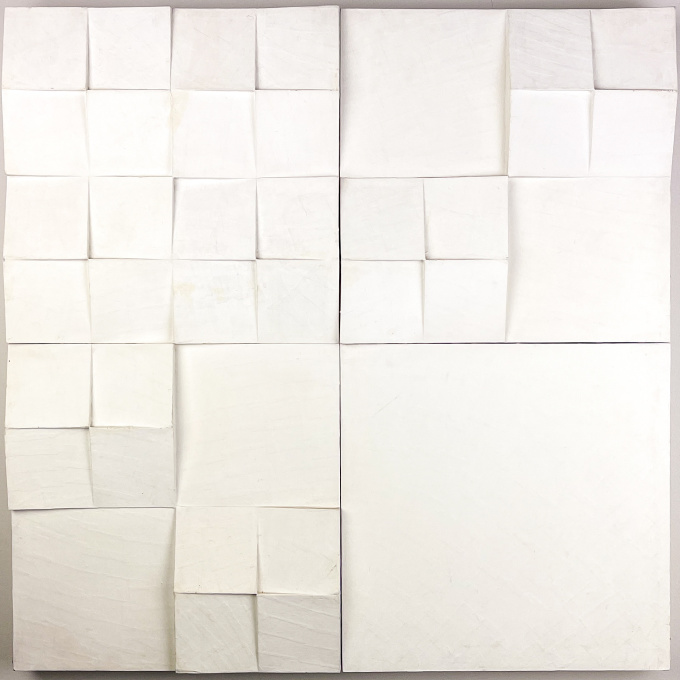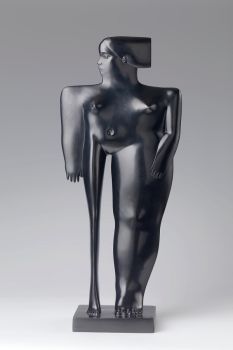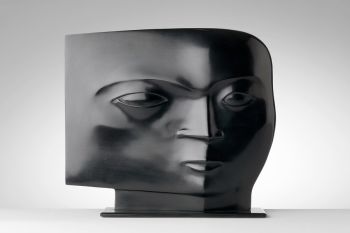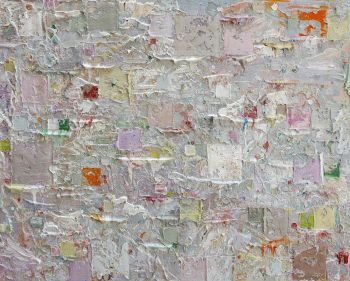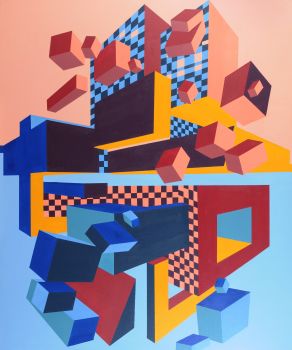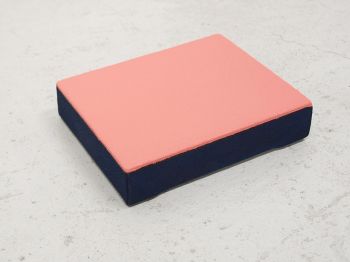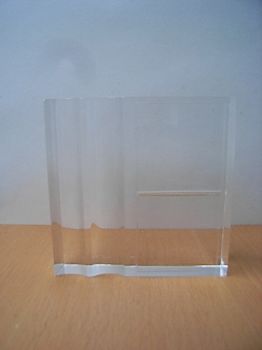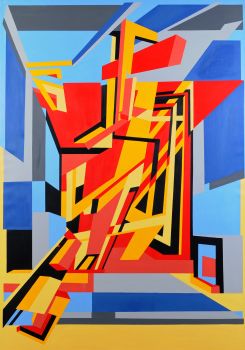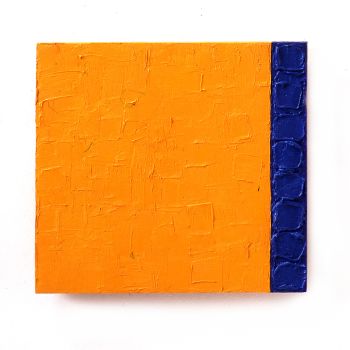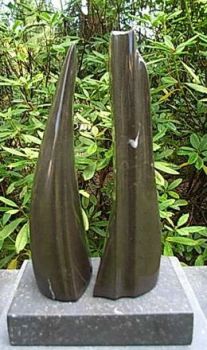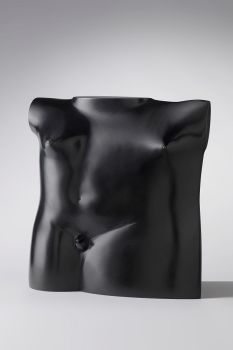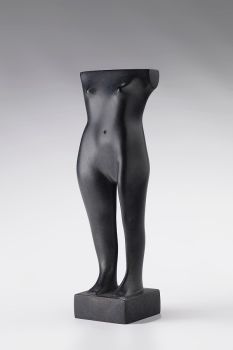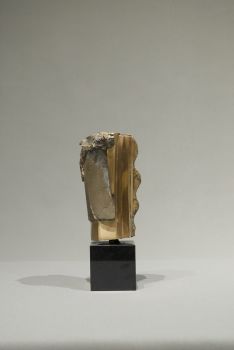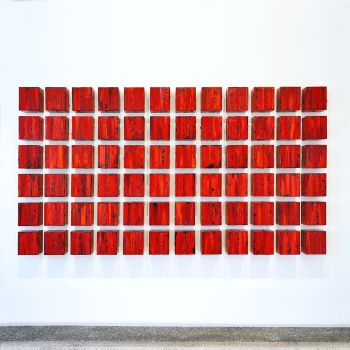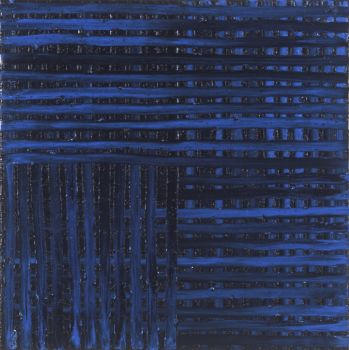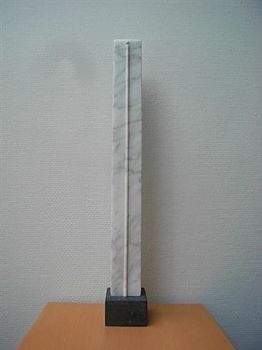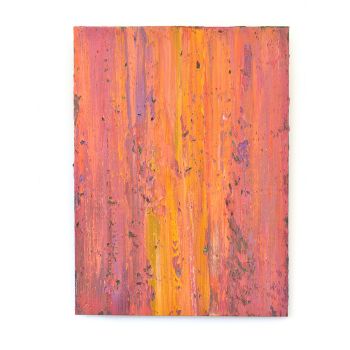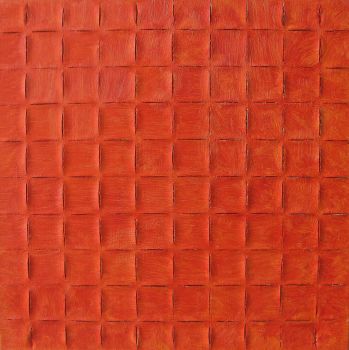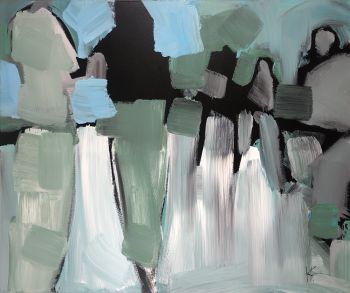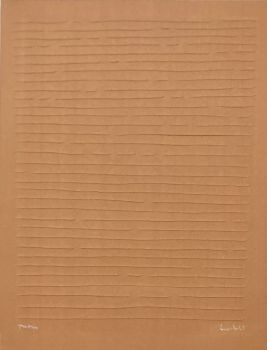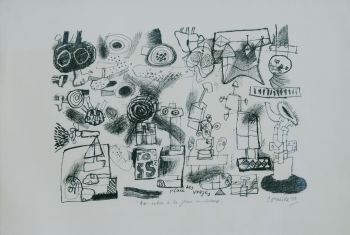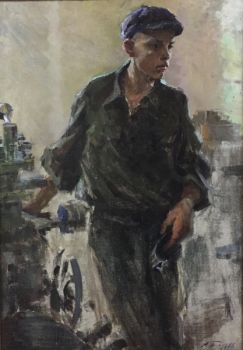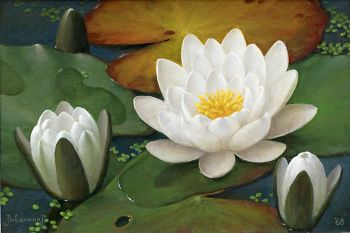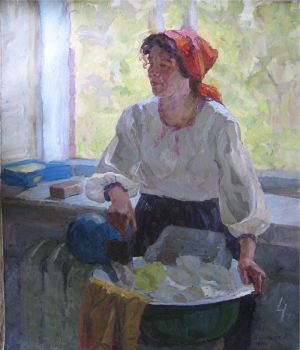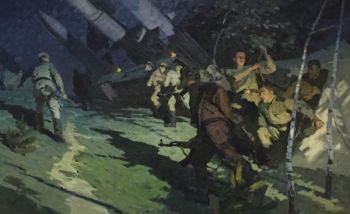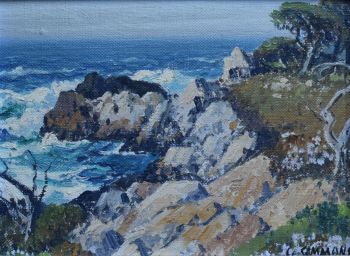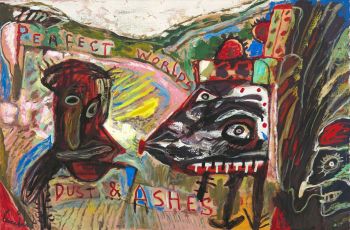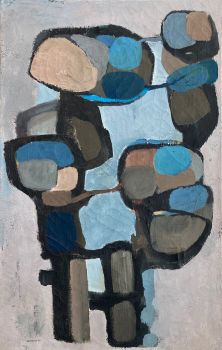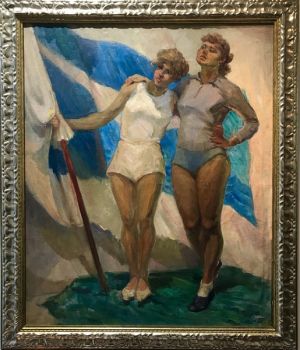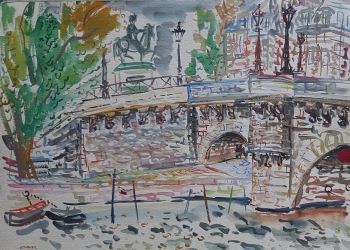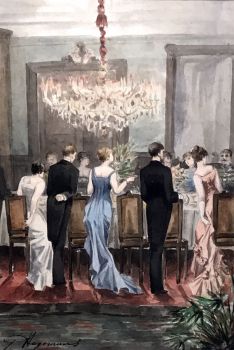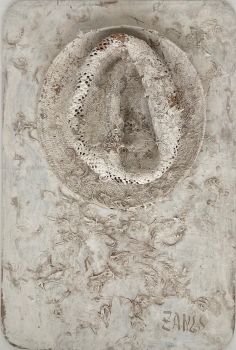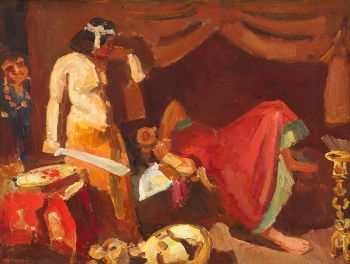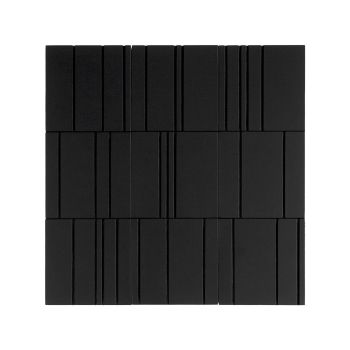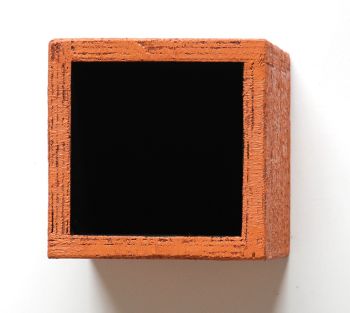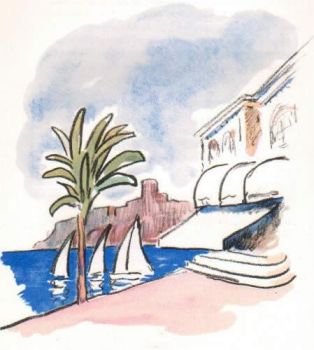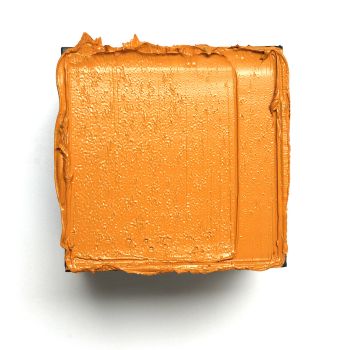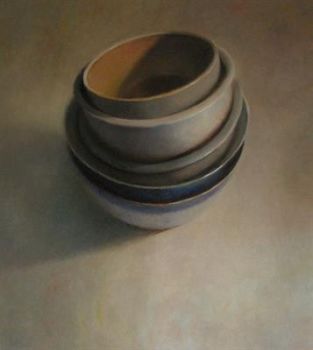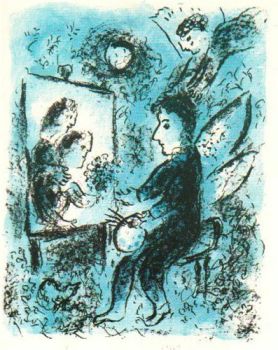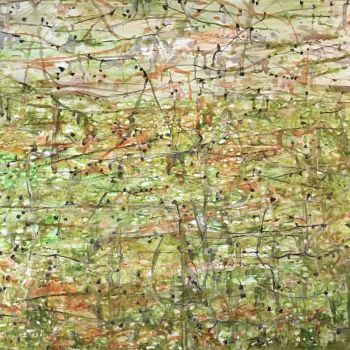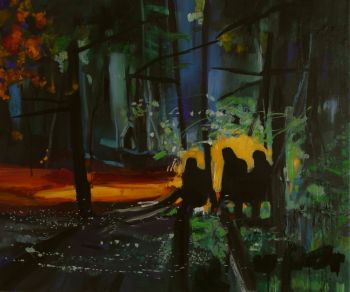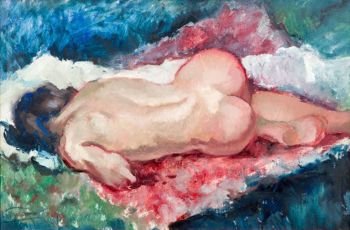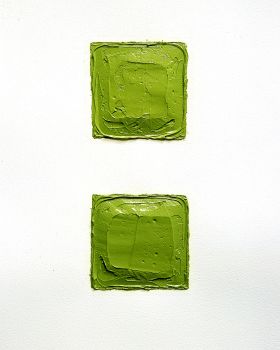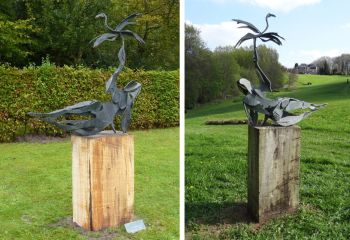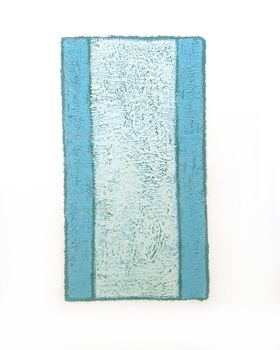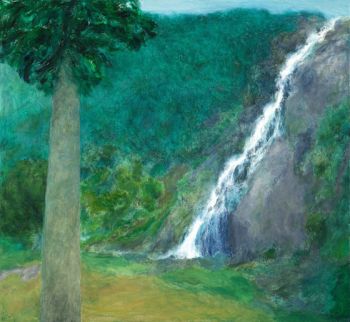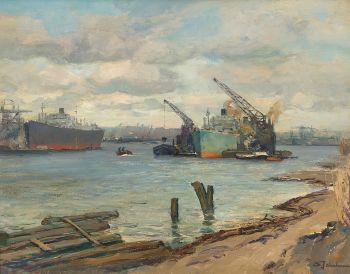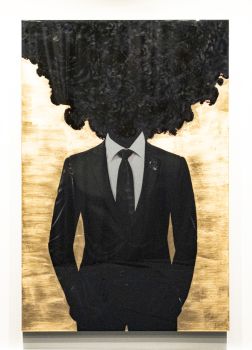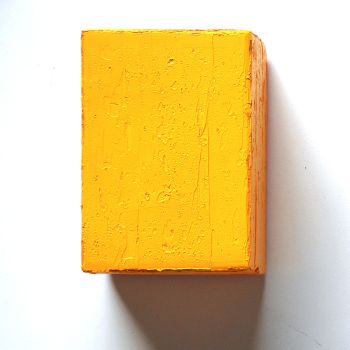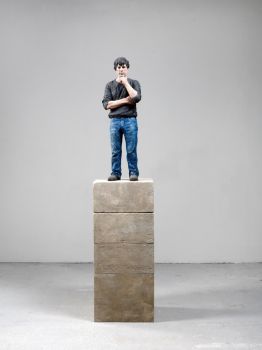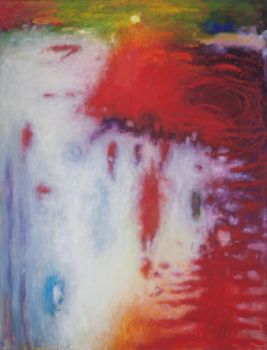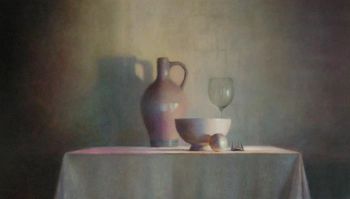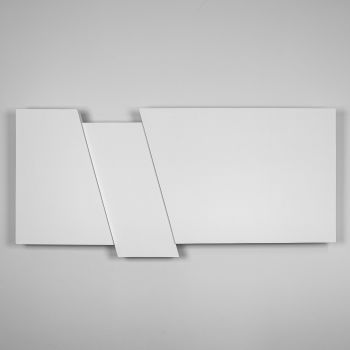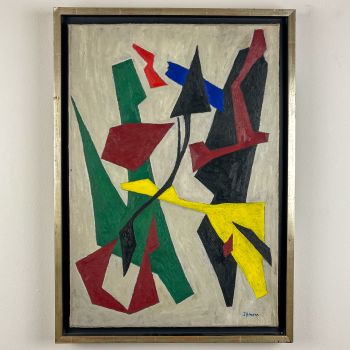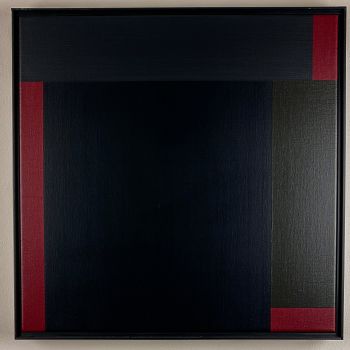Jaap Egmond – “IH 11-IH 12-IH 15-IH 16”, 1976 – relief: paper mache on wood, painted 1976
Jaap Egmond
MaderaPapel machéPintura
80 ⨯ 80 ⨯ 6 cm
ConditionGood
Precio a consultar
Van Kerkhoff Art
- Sobre la obra de arteAn original relief – painted paper mache on wood – by the Dutch artist Jaap Egmond. Sculpted in May and June 1976. Signed, titled and dated by the artist. The relief consists of four pieces each signed, titled and dated on the reverse, merged together in the final artwork. In clockwise order (seen from the front) the quarters are titled “IH 11”, “IH 12”, “IH 15” and “IH 16”. Jaap Egmonds works are very mathematically driven – very much in contrast with his inspirer Jan Schoonhoven. This work is a prime example of this where the diagonally opposite quarters complement each other mathematically.
About Jaap Egmond
Jacob Johannes (Jaap) Egmond (New York City 1913 – Amstelveen 1997) was a Dutch artist, sculptor, painter, teacher and also a gifted pianist.
Born in New York as the son of a captain on the deep sea, moved back to the Netherlands with his family due to the threat of World War I. He grew up in Amsterdam and completed his training as a drawing teacher at the Rijksinstituut tot Opleiding van Tekenleraar from 1932 to 1936. In his early years, he also studied piano at the Amsterdam Conservatory of Music.
After his training, Egmond started working as a drawing teacher at several schools in Amsterdam in 1937, which was the beginning of a lifelong dedication to teaching. After the war, he taught at the Vossius Gymnasium and later at the Kweekschool and the Pedagogical Academy in Amsterdam. In collaboration with colleague Klaas de Poel, he developed a new teaching method for the Teacher Training College.
In 1969, Jaap Egmond settled as an artist in Amstelveen. During his career, he made abstract reliefs, strongly influenced by the work of Jan Schoonhoven, with which he became a representative of minimalism in the Netherlands in the 1970s and 1980s. His work, ranging from cardboard and paper to freestanding work in steel, was characterised by the play of light and shadow and monochromy.
Egmond exhibited his art from the early 1970s in galleries and art institutions. In the 1980s, he also experimented with total theatre, with his large plastics serving as sets for modern music performances, in collaboration with Wim de Ruiter.
Jaap Egmond is remembered as a constructivist artist, whose work is influenced by the Dutch Zero movement. His creations reflect a constant search for form, light and shadow, and monochromy, through which he left a lasting impact on Dutch art.
Signed
Signed, titled and dated by the artist on the reverse
Condition
Good original condition, some stains, small water-damage on the side.
Provenance
Borzo Gallery, Amsterdam
Dimensions
Artwork
Height 80 cm
Width 80 cm
Depth 6 cm - Sobre el artista
Jacob Johannes (Jaap) Egmond (nacido el 31 de agosto de 1913 en Nueva York, fallecido el 26 de noviembre de 1997 en Amstelveen) fue un versátil artista holandés, conocido por su trabajo como escultor, pintor y docente, así como por sus habilidades como pianista.
Egmond ha hecho una contribución significativa a la teoría y la educación artística, especialmente en las áreas de apreciación del arte y educación del dibujo.
Su obra, compuesta principalmente por relieves abstractos, muestra una clara afinidad con la obra de Jan Schoonhoven y lo sitúa como una figura destacada dentro del movimiento minimalista en los Países Bajos durante las décadas de 1970 y 1980.
Nacido en Nueva York como hijo de un capitán, Egmond se mudó con su familia a los Países Bajos debido a la amenaza de la Primera Guerra Mundial, donde creció en Ámsterdam. Entre 1932 y 1936 se formó como profesor de dibujo en el Instituto Nacional para la Formación de Profesores de Dibujo de Ámsterdam, tras estudiar primero piano durante un año en el Conservatorio de Ámsterdam.
Tras su educación, comenzó como profesor de dibujo en Ámsterdam en 1937, función que desempeñaría a lo largo de su carrera. Después de la Segunda Guerra Mundial enseñó en el Vossius Gymnasium y más tarde en la Academia Pedagógica de Amsterdam, donde enseñó dibujo, trabajos manuales e historia del arte.
En los años 60, desarrolló junto con su colega Klaas de Poel un método de enseñanza innovador para la Kweekschool, que se incluyó en varios libros de texto.
En 1969, Egmond se instaló como artista en Amstelveen, donde se centró en la creación de cientos de relieves en cartón y papel, seguidos más tarde por experimentos con acero y pintura. En la década de 1980 trabajó con Wim de Ruiter en proyectos de teatro total, en los que sus grandes esculturas formaban un telón de fondo dinámico para actuaciones musicales modernas.
Egmond, que en su juventud dudaba entre ser pianista o profesor de arte, más tarde actuó como acompañante de cantantes dentro de un círculo cerrado. Estuvo casado con Joke Sprokkereef (1918-1986), profesora, y juntos tuvieron cuatro hijos. La familia vivió en Amstelveen después de la Segunda Guerra Mundial.
Como artista, Egmond es considerado un constructivista, fuertemente influenciado por el movimiento holandés Zero. Su obra se caracteriza por el uso de luces y sombras y una preferencia por la monocromía, con la que ha hecho una contribución única al arte moderno holandés.
¿Está interesado en comprar esta obra de arte?
Artwork details
Related artworks
Rene Rietmeyer
"Portrait of Alessandra" 20182018
Precio a consultarEuropean Cultural Centre Collection
1 - 4 / 24 curada por
curada porGallerease Magazine
1 - 4 / 24Artista Desconocido
Icono ruso que representa una Deesis extendida1600 - 1650
Precio a consultarKunsthandel H.W.C. Dullaert Icons
Rene Rietmeyer
"Netherlands, The Hague, March 2002"2002
Precio a consultarEuropean Cultural Centre Collection
1 - 4 / 24- 1 - 4 / 12

